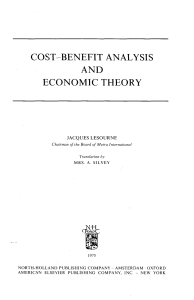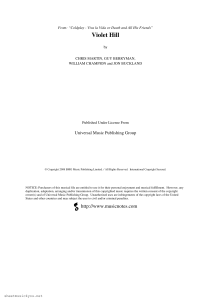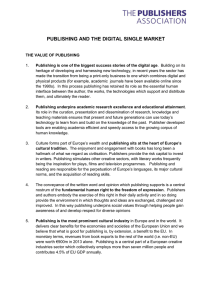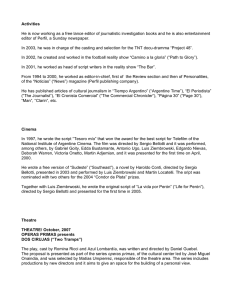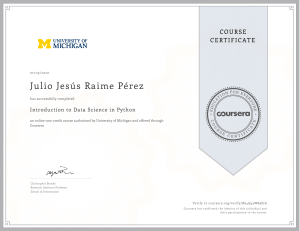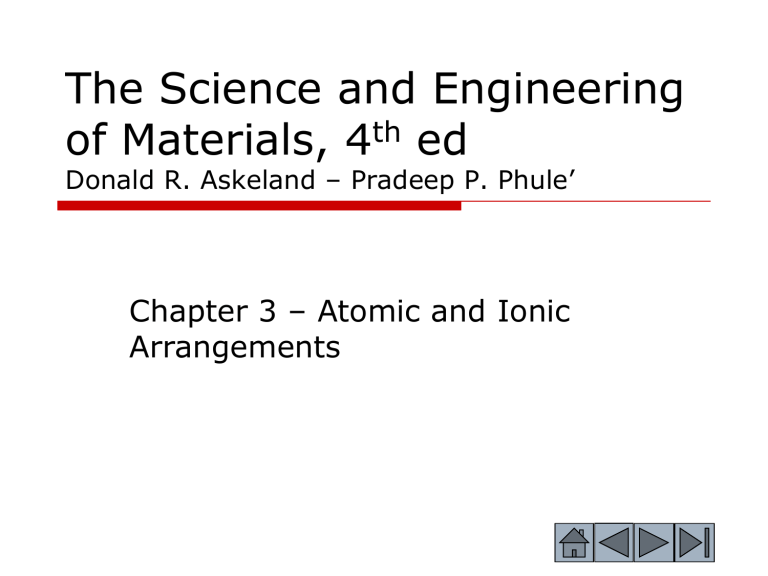
The Science and Engineering of Materials, 4th ed Donald R. Askeland – Pradeep P. Phule’ Chapter 3 – Atomic and Ionic Arrangements 1 □ NANOESTRUCTURA : Estructura de un material a una escala de 1 – 100 nm □ MICROESTRUCTURA: Estructura de un material a una escala de 100 – 100.000 nm □ MACROESTRUCTURA: Estructura de un material a una escala > 100.000 nm 2 PROPIEDADES SENSIBLES E INSENSIBLES A LA MICROESTRUCTURA 3 4 5 1.4 ORGANIZACIÓN ATÓMICA (c) 2003 Brooks/Cole Publishing / Thomson Learning™ Figure 3.1 Levels of atomic arrangements in materials: (a) Inert monoatomic gases have no regular ordering of atoms: (b,c) Some materials, including water vapor, nitrogen gas, amorphous silicon and silicate glass have short-range order. (d) Metals, alloys, many ceramics and some polymers have regular ordering of atoms/ions that extends through the material. 6 Figure 3.2 Basic Si-0 tetrahedron in silicate glass. (c) 2003 Brooks/Cole Publishing / Thomson Learning™ 7 Figure 3.3 Tetrahedral arrangement of C-H bonds in polyethylene. (c) 2003 Brooks/Cole Publishing / Thomson Learning™ 8 9 Figure 3.11 The fourteen types of Bravais lattices grouped in seven crystal systems. The actual unit cell for a hexagonal system is shown in Figures 3.12 and 3.16. (c) 2003 Brooks/Cole Publishing / Thomson Learning™ 10 Figure 3.12 Definition of the lattice parameters and their use in cubic, orthorhombic, and hexagonal crystal systems. (c) 2003 Brooks/Cole Publishing / Thomson Learning™ 11 12 13 14 15 16 Figure 3.13 (a) Illustration showing sharing of face and corner atoms. (b) The models for simple cubic (SC), body centered cubic (BCC), and face-centered cubic (FCC) unit cells, assuming only one atom per lattice point. (c) 2003 Brooks/Cole Publishing / Thomson Learning™ 17 (c) 2003 Brooks/Cole Publishing / Thomson Learning™ Figure 3.14 The relationships between the atomic radius and the Lattice parameter in cubic systems (for Example 3-2). 18 (c) 2003 Brooks/Cole Publishing / Thomson Learning™ Figure 3.15 Illustration of coordinations in (a) SC and (b) BCC unit cells. Six atoms touch each atom in SC, while the eight atoms touch each atom in the BCC unit cell. 19 20 (c) 2003 Brooks/Cole Publishing / Thomson Learning™ Figure 3.16 The hexagonal close-packed (HCP) structure (left) and its unit cell. 21 Figure 3.19 Crystallographic directions and coordinates (for Example 3.7). (c) 2003 Brooks/Cole Publishing / Thomson Learning™ 22 (c) 2003 Brooks/Cole Publishing / Thomson Learning™ Figure 3.20 Equivalency of crystallographic directions of a form in cubic systems. 23 (c) 2003 Brooks/Cole Publishing / Thomson Learning™ Figure 3.22 Crystallographic planes and intercepts (for Example 3-8) 24 (c) 2003 Brooks/Cole Publishing / Thomson Learning™ Figure 3.23 The planer densities of the (010) and (020) planes in SC unit cells are not identical (for Example 3-9). 25 Figure 3.25 MillerBravais indices are obtained for crystallographic planes in HCP unit cells by using a four-axis coordinate system. The planes labeled A and B and the direction labeled C and D are those discussed in Example 3-11. (c) 2003 Brooks/Cole Publishing / Thomson Learning™ 26 (c) 2003 Brooks/Cole Publishing / Thomson Learning™ Figure 3.26 Typical directions in the HCP unit cell, using both three-and-four-axis systems. The dashed lines show that the [1210] direction is equivalent to a [010] direction. 27 28 Figure 3.27 The ABABAB stacking sequence of closepacked planes produces the HCP structure. 29 (c) 2003 Brooks/Cole Publishing / Thomson Learning™ (c) 2003 Brooks/Cole Publishing / Thomson Learning™ Figure 3.28 The ABCABCABC stacking sequence of close-packed planes produces the FCC structure. 30 (c) 2003 Brooks/Cole Publishing / Thomson Learning™ Figure 3.29 The location of the interstitial sites in cubic unit cells. Only representative sites are shown. 31 32 33 34 35 36 37 38 39 40 41 42 43 Célula unitária de perovskita (CaTiO3). 44 http://aflowlib.org/CrystalDatabase/AB2_cF12_225_a_c.html https://homepage.univie.ac.at/michael.leitner/lattice/index.html http://www.derematerialia.com/estructuras-cristalinas/?s=POLIETILENO 45 46 (c) 2003 Brooks/Cole Publishing / Thomson Learning Figure 3.39 Determining the relationship between lattice parameter and atomic radius in a diamond cubic cell (for Example 3-17). 47 (c) 2003 Brooks/Cole Publishing / Thomson Learning 48 ESTRUCTURA MOLECULAR DEL POLIETILENO 49 50 Rayos X .- Son radiaciones electromagnéticas con longitudes de onda entre (0.5 a 2.5 Å), La longitud de onda de la luz visible es del orden de (6 000 Å) 51 52 (c) 2003 Brooks/Cole Publishing / Thomson Learning Figure 3.43 (a) Destructive and (b) reinforcing interactions between x-rays and the crystalline material. Reinforcement occurs at angles that satisfy Bragg’s law. 53 54 (c) 2003 Brooks/Cole Publishing / Thomson Learning Figure 3.45 (a) Diagram of a diffractometer, showing powder sample, incident and diffracted beams. (b) The diffraction pattern obtained from a sample of gold powder. 55 56 57 58 59 60

